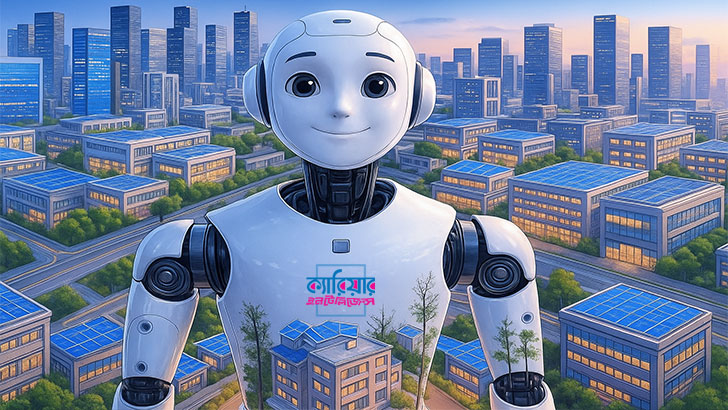Artificial Intelligence (AI) is no longer a futuristic concept—it’s a present-day force that is transforming industries around the globe. From finance to healthcare, from manufacturing to media, AI is automating tasks, cutting costs, and in many cases, replacing human jobs. In this rapidly evolving landscape, the most pressing question for today’s workforce is:
“Is my job safe from AI?”
This question isn’t just theoretical. According to a McKinsey Global Institute report, nearly 800 million jobs could be lost to automation by 2030. Many professions are already seeing signs of disruption. But amid this technological upheaval, there are still careers that not only offer stability but also boast high growth potential and excellent pay.
A new report by Resume Genius, published on Entrepreneur.com, identifies the top 10 “AI-proof” jobs—those least likely to be automated, while also offering a bright future in terms of salary and demand. For students, professionals considering a career switch, and even educators and parents guiding the next generation, this list is a must-read.
What Makes a Job AI-Proof?
Resume Genius used three core criteria to determine which jobs made the list:
-
Automation Risk below 50% – based on data from the University of Oxford’s automation probability model.
-
Median Annual Pay of at least $49,500 – according to the U.S. Bureau of Labor Statistics (BLS).
-
Job Growth Rate of at least 10% – projected from 2023 to 2033.
These metrics provide a balanced perspective, focusing not just on AI resistance but also on economic viability and long-term relevance.
The Top 10 AI-Proof Jobs
Below is the list of careers ranked by Resume Genius, featuring solid pay, strong growth, and minimal risk from automation.
| Job Title | Median Annual Salary | Job Growth Rate | AI Risk |
|---|---|---|---|
| 1. Computer & Information Research Scientist | $149,910 | 26% | 31% |
| 2. Physician Assistant (PA) | $133,260 | 28% | 0% |
| 3. Nurse Practitioner (NP) | $132,050 | 40% | 0% |
| 4. Veterinarian | $125,510 | 19% | 7% |
| 5. Medical & Health Services Manager | $117,960 | 29% | 16% |
| 6. Speech-Language Pathologist | $95,410 | 18% | 9% |
| 7. Operations Research Analyst | $91,290 | 23% | 42% |
| 8. Epidemiologist | $83,980 | 19% | 7% |
| 9. Logistician | $80,880 | 19% | 38% |
| 10. Wind Turbine Technician | $62,580 | 60% | 39% |
Let’s look into a few key roles to understand why they are AI-resistant.
1. Computer & Information Research Scientist
These professionals lead the development of new computing technologies, including AI itself. While some tasks can be automated, the creative and strategic thinking involved in research and innovation remains a human domain.
2. Physician Assistant
PAs work under licensed doctors to diagnose illnesses, prescribe medications, and offer patient care. While AI can assist in diagnostics, empathy, communication, and human judgment are irreplaceable.
⚕️ 3. Nurse Practitioner
NPs offer primary and specialty care, often independently. They are vital to expanding access to healthcare. AI lacks the bedside manner and nuanced decision-making this role demands.
4. Veterinarian
Treating animals requires not just clinical skills but also intuition, empathy, and physical presence—things no robot can replicate effectively.
5. Medical & Health Services Manager
This role combines strategy, leadership, and people management within healthcare systems. While data can inform decisions, the human element is crucial for execution and adaptation.
6. Speech-Language Pathologist
Working with individuals who have speech or communication disorders requires patience, emotional intelligence, and a personalized approach—factors that are far beyond AI’s capabilities.
7. Operations Research Analyst
They use advanced mathematical and analytical methods to solve complex problems. While some modeling can be automated, the ability to interpret results and apply them contextually keeps humans in charge.
8. Epidemiologist
This role gained attention during the COVID-19 pandemic, as tracking disease outbreaks, analyzing data, and advising policy require both scientific expertise and sound judgment.
9. Logistician
Logistics may seem easy to automate, but unexpected events—such as weather, political changes, and human error—require adaptive problem-solving and quick decision-making from humans.
10. Wind Turbine Technician
This is the fastest-growing job on the list (60% growth). Maintaining wind turbines demands physical dexterity, environmental adaptation, and on-site troubleshooting, making it difficult to automate.
Expert Insight
Eva Chan, a spokesperson for Resume Genius, noted:
“AI can write code, analyze x-rays, and generate content, but it can’t comfort a patient or climb a wind turbine. Jobs that rely on critical thinking, physical presence, or human compassion are far more resilient.”
This insight is critical. AI excels in pattern recognition and automation, but jobs requiring human presence, empathy, and adaptability are harder to displace.
What Does This Mean for Career Planning?
The world of work is undergoing a seismic shift. Choosing a career today is not just about following your passion—it also involves assessing future viability. This list of AI-resistant careers serves as a guidepost for:
-
Students planning their academic paths
-
Professionals considering upskilling or changing careers
-
Parents and educators advising the next generation
If you are entering the job market—or even thinking about where your skills fit in the next 10 years—these roles deserve serious attention.
Final Thoughts
AI is transforming the job market—but not destroying it. Instead, it’s creating a new hierarchy of roles where human-centric skills are more valued than ever before.
Instead of fearing AI, we need to prepare for a future where we work with AI—while focusing on skills and roles where humans still hold the edge. These 10 careers are proof that with the right choices, we can thrive in the age of automation.
So ask yourself again:
Is your career future-proof?
If not, perhaps now is the time to make a change.
Source: Entrepreneur.com | Based on: Resume Genius, 2025 Report


